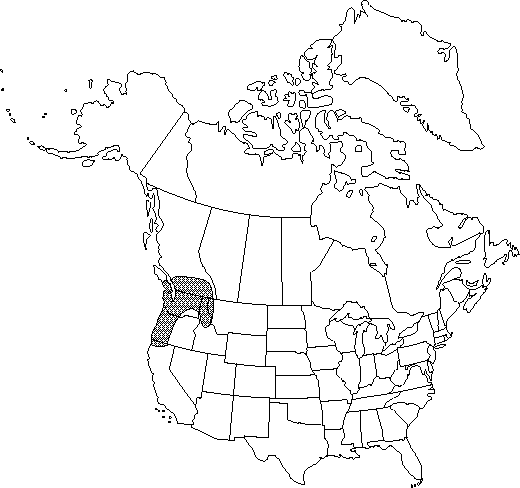Difference between revisions of "Berberis aquifolium"
Fl. Amer. Sept., 219. 1814.
FNA>Volume Importer |
imported>Volume Importer |
||
| (6 intermediate revisions by 2 users not shown) | |||
| Line 13: | Line 13: | ||
}}{{Treatment/ID/Special_status | }}{{Treatment/ID/Special_status | ||
|code=F | |code=F | ||
| − | |label= | + | |label=Illustrated |
}} | }} | ||
|basionyms= | |basionyms= | ||
| Line 19: | Line 19: | ||
|name=Mahonia aquifolium | |name=Mahonia aquifolium | ||
|authority=(Pursh) Nuttall | |authority=(Pursh) Nuttall | ||
| + | |rank=species | ||
}} | }} | ||
|hierarchy=Berberidaceae;Berberis;Berberis aquifolium | |hierarchy=Berberidaceae;Berberis;Berberis aquifolium | ||
| Line 34: | Line 35: | ||
|elevation=0-2100 m | |elevation=0-2100 m | ||
|distribution=B.C.;Calif.;Idaho;Mont.;Oreg.;Wash. | |distribution=B.C.;Calif.;Idaho;Mont.;Oreg.;Wash. | ||
| − | |discussion=<p>Berberis aquifolium is the state flower of Oregon. It is widely used as an ornamental and has been reported as an escape from cultivation in scattered localities across the continent (Ontario, Quebec, central California, Michigan, and Nevada).</p><!-- | + | |discussion=<p><i>Berberis aquifolium</i> is the state flower of Oregon. It is widely used as an ornamental and has been reported as an escape from cultivation in scattered localities across the continent (Ontario, Quebec, central California, Michigan, and <i>Nevada</i>).</p><!-- |
| − | --><p>Berberis aquifolium is resistant to infection by Puccinia graminis.</p><!-- | + | --><p><i>Berberis aquifolium</i> is resistant to infection by Puccinia graminis.</p><!-- |
| − | --><p>Medicinally, various root preparations of Berberis aquifolium were used by Native Americans for stomach trouble, hemorrhages, and tuberculosis; as a panacea, a tonic, a gargle, and an eye wash; and to purify blood. Leaves and roots were used in steam baths to treat yellow fever; karok was used as a poison; and the tips of stems were used to treat stomach aches (D. E. Moermann 1986).</p> | + | --><p>Medicinally, various root preparations of <i>Berberis aquifolium</i> were used by Native Americans for stomach trouble, hemorrhages, and tuberculosis; as a panacea, a tonic, a gargle, and an eye wash; and to purify blood. Leaves and roots were used in steam baths to treat yellow fever; karok was used as a poison; and the tips of stems were used to treat stomach aches (D. E. Moermann 1986).</p> |
|tables= | |tables= | ||
|references= | |references= | ||
| Line 45: | Line 46: | ||
-->{{#Taxon: | -->{{#Taxon: | ||
name=Berberis aquifolium | name=Berberis aquifolium | ||
| − | |||
|authority=Pursh | |authority=Pursh | ||
|rank=species | |rank=species | ||
| Line 59: | Line 59: | ||
|publication title=Fl. Amer. Sept., | |publication title=Fl. Amer. Sept., | ||
|publication year=1814 | |publication year=1814 | ||
| − | |special status=Endemic; | + | |special status=Endemic;Illustrated |
| − | |source xml=https:// | + | |source xml=https://bitbucket.org/aafc-mbb/fna-data-curation/src/2e0870ddd59836b60bcf96646a41e87ea5a5943a/coarse_grained_fna_xml/V3/V3_1169.xml |
|genus=Berberis | |genus=Berberis | ||
|species=Berberis aquifolium | |species=Berberis aquifolium | ||
Latest revision as of 21:46, 5 November 2020
Shrubs, evergreen, 0.3-3(-4.5) m. Stems usually monomorphic, seldom with short axillary shoots. Bark of 2d-year stems gray-brown or purplish, glabrous. Bud scales 4-8(-14) mm, deciduous. Spines absent. Leaves 5-9-foliolate; petioles 1-6 cm. Leaflet blades thin and flexible or rather rigid; surfaces abaxially glossy, smooth, adaxially glossy, green; terminal leaflet stalked, blade 5.1-8.7(-14.5) × 2.4-4.5(-5.5) cm, 1.7-2.5 times as long as wide; lateral leaflet blades lance-ovate to lance-elliptic, 1(-3)-veined from base, base obtuse or truncate, rarely weakly cordate, margins plane or undulate, toothed, each with 5-21 teeth 0-2 mm tipped with spines to 0.8-2.2 × 0.2-0.3 mm, apex acute or sometimes obtuse or rounded. Inflorescences racemose, dense, 30-60-flowered, 3-9(-11) cm; bracteoles membranous, apex rounded or obtuse, sometimes apiculate. Flowers: anther filaments with distal pair of recurved lateral teeth. Berries blue, glaucous, oblong-ovoid, 6-10 mm, juicy, solid. 2n = 28, 56.
Phenology: Flowering winter–spring (Mar–Jun).
Habitat: Open woods and shrublands
Elevation: 0-2100 m
Distribution

B.C., Calif., Idaho, Mont., Oreg., Wash.
Discussion
Berberis aquifolium is the state flower of Oregon. It is widely used as an ornamental and has been reported as an escape from cultivation in scattered localities across the continent (Ontario, Quebec, central California, Michigan, and Nevada).
Berberis aquifolium is resistant to infection by Puccinia graminis.
Medicinally, various root preparations of Berberis aquifolium were used by Native Americans for stomach trouble, hemorrhages, and tuberculosis; as a panacea, a tonic, a gargle, and an eye wash; and to purify blood. Leaves and roots were used in steam baths to treat yellow fever; karok was used as a poison; and the tips of stems were used to treat stomach aches (D. E. Moermann 1986).
Selected References
None.
